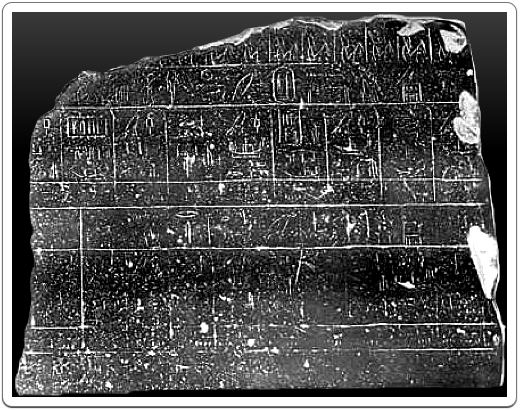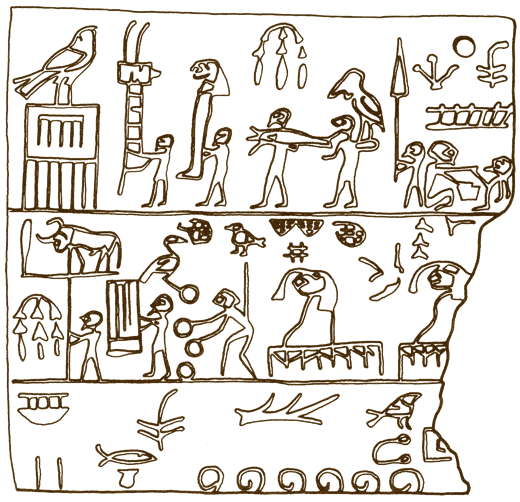Cairo Fragment CF1 of the Annals Stone states Horus Djer’s (name) of gold, probably a reference to the king’s name of birth, to have been Iti, which corresponds with the 3rd name listed in the Abydos King-List, after Menes and Teti. Djer is also the 3rd king mentioned on the two Umm el-Qa’ab royal seals that list the kings buried at that site. This confirms that Horus Djer was considered to have been the 3rd king of the 1st Dynasty.

Cairo Fragment CF1. The second row mentions Horus Djer, along with his probable birthname Iti. The fragment also names an otherwise unattested woman named Khenthap as Djer’s mother.
According to Manetho, Djer ruled for 57 year. The Turin King-List has a lacuna at the spot where Djer would be listed.
The Palermo Stone lists the first 10 years of Djer’s reign, while Cairo Fragment CF1 lists 9 more, granting Djer a total of at least 19 years as king. If the reconstruction of the Annals Stone based on its different fragments is correct, the reign of Djer may have lasted up to 41 years.
Also according to Cairo Fragment CF1, Djer’s mother was a woman named Khenthap, who is not attested by contemporary sources. Assuming that Djer was the son of his predecessor Aha, Khenthap probably was one of Aha’s queens.
Several ladies bearing titles that identify them as queens have been associated with Djer and may have been his wives: Herneith, who was the owner of Saqqara tomb S3507, Nakhtneith, buried in one of the subsidiary graves of Djer’s tomb, and Penebui.
It is assumed that Djer was the father of his successor Djet, and perhaps also of Djet’s wife Merneith. The mothers of both Djet and Merneith are not know.
Cairo Fragment CF1 hints at a possible military expedition against a region named Setjet, a region in Syria-Palestine. There are no contemporary sources that corroborate Egyptian military activity in Western Asia at this time.
Most other year-cells on the fragments of the Annals Stone related to Djer mention ritualistic acts and visits to temples and shrines throughout the country.
At least one label from the reign of Djer shows evidence of human sacrifice, with a bound person being stabbed during a ritual that appears to have a funerary character.

Label showing the killing of a human in a ritual context (top row, to the right).
Source: Wilkinson, Early Dynastic Egypt, p. 267, fig. 2.
Djer was buried in a fairly elaborate tomb at Umm el-Qa’ab, registered as tomb O.
A mummified arm, wearing four lovely bracelets, was found in this tomb and may have belonged to one of Djer’s wives.
Later generations would consider this tomb to have been the tomb of Osiris, god of the dead.